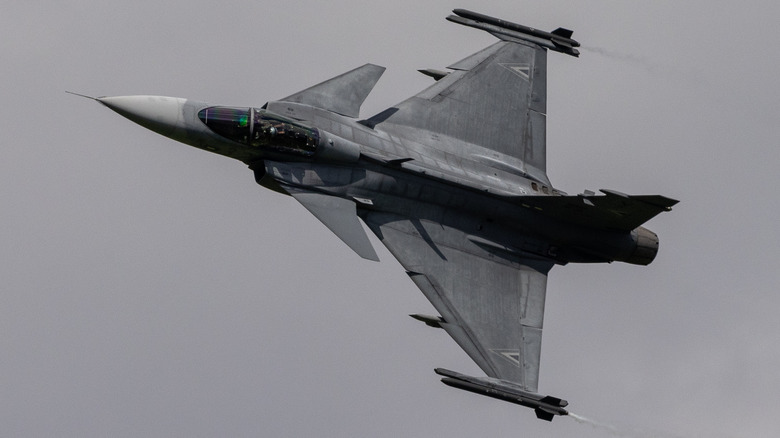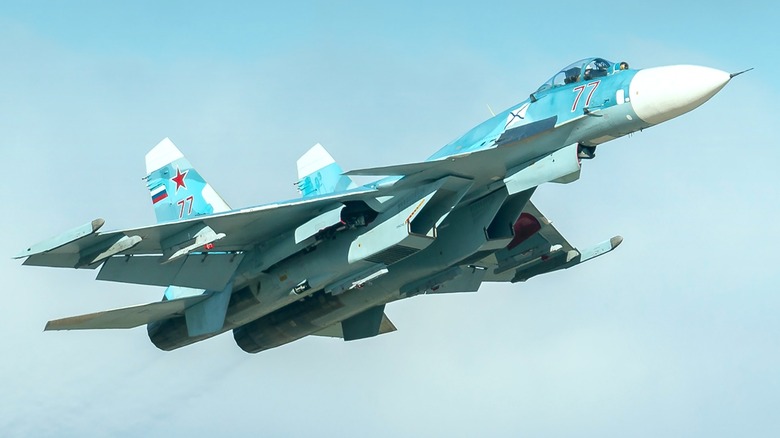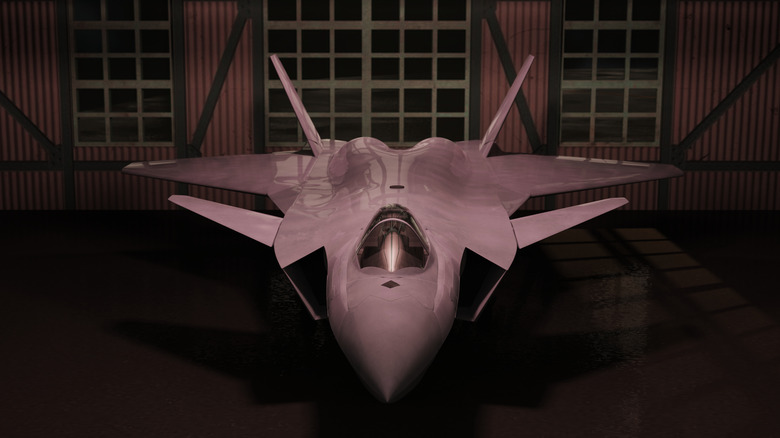What Are Canards And Why Do Some Fighter Jets Have Them?
For the most part, fixed-wing aircraft have the same configuration, but there's a type of plane that incorporates something different: Canards. A canard is a wing that is fixed before the main wings, and they've been around since the beginning of air travel. Canards were one of many experimental features that came and went repeatedly over the years, but modern fighters are featuring them more and more these days, which is a change from what was built in the last century.
Canards are used for a variety of purposes, and there are positive aspects to using them as well as negative ones. The term comes from the 1906' Santos-Dumont 14-bis, though the Wright Flyer, which flew three years earlier also featured canards. Planes with canards have better control over the main wing's airflow while reducing its loading. Additionally, canards can improve an aircraft's maneuverability and reduce the possibility of stalling. A negative aspect of canards revolves around an aircraft's aerodynamic characteristics, particularly at high speeds, so there are tradeoffs, especially when the canards are of a static design.
As technology progressed, canards fell out of fashion in aircraft design, but they've returned over the past few decades. This is due to a number of factors, including the ability to mechanically extend and retract canards for improved flight maneuverability. Modern fighters are incorporating canards more often in the 21st century because the technology to use them more effectively has proven their worth in more modern fighters like the Eurofighter Typhoon, Chengdu J-20, the Sukhoi Su-47 Berkut, and many more.
20th century examples of fighters with canards
Canards are helpful for a variety of reasons, but they aren't typically required for passenger or cargo aircraft — their ability to improve maneuverability is primarily beneficial to fighters. That said, canards have been added to bombers and other non-fighter aircraft. The U.S.-built prototype bomber, the North American XB-70 Valkyrie, sported canards close to the cockpit.
That bomber never went into production, but it did manage to reach Mach 3.1 (2,056 mph). Still, most production aircraft with canards from the 20th century started popping up during World War II. There was a renewed interest in canards in the '60s, but they didn't become popular in production aircraft until the late '70s and 1980s. That's when fighters like Israel's Kfil (Lion Club) entered the Israeli Air Force (IAF) as a multirole combat aircraft sporting canards just before and slightly above the main wings.
The Soviet Union flew several fighters with canards before its breakup. These included the Sukhoi Su-33, which the Russian Federation followed with the Su-34 Fullback years later. The U.S. had many aircraft with canards throughout the 20th century, but they weren't fighters, and many never entered production. As a result, most modern fighters with canards are built by other nations, while jet designers in the States prefer to use tail-mounted elevators for control of the plane's lift and pitch.
[Featured image by Dmitry Terekhov via Wikimedia Commons | Cropped and scaled | CC BY-SA 2.0]
21st century examples of fighters with canards
The 21st century has seen several new fighter aircraft introduced with canards, and none belong to the U.S. The first to introduce such a fighter was China, which began flying the Shenyang J-15 Flying Shark in 2009. Two years later, China began flying the Chengdu J-20 Mighty Dragon, which also features canards, making it the first fifth-generation, and stealth fighter to utilize the feature. Only one additional fighter built in the 21st century has canards (so far).
Iran's Qaher-313, which has yet to enter production as of late 2024, will be a canard-equipped stealth unmanned aerial vehicle (UAV). The aircraft was initially intended to be manned, but Iran decided to alter the aircraft into a UAV in 2023. The Qaher-313 seems heavily inspired by the U.S.' highly advanced F-35 Lightning II, though that stealth fifth-generation fighter is manned. Regardless, incorporating canards on the Qaher-313 shows that the design feature is being embraced by more nations intent on creating more advanced fighters.
Despite this trend, the U.S. remains one of the few technologically advanced nations that independently produces fighters who prefer tail-mounted elevators over canards. It's likely the U.S. prefers to avoid canards due to a lack of need for its twin-engine fighters. Modern canards are also far more advanced than 20th-century models, so avoiding them reduces an aircraft's overall complexity and, likely, its maintenance time and costs. Still, the U.S. may produce a fighter with canards, as the current design for Boeing's F/A-XX sixth-generation fighter has canards and no tail; however, this may change as the project develops.


